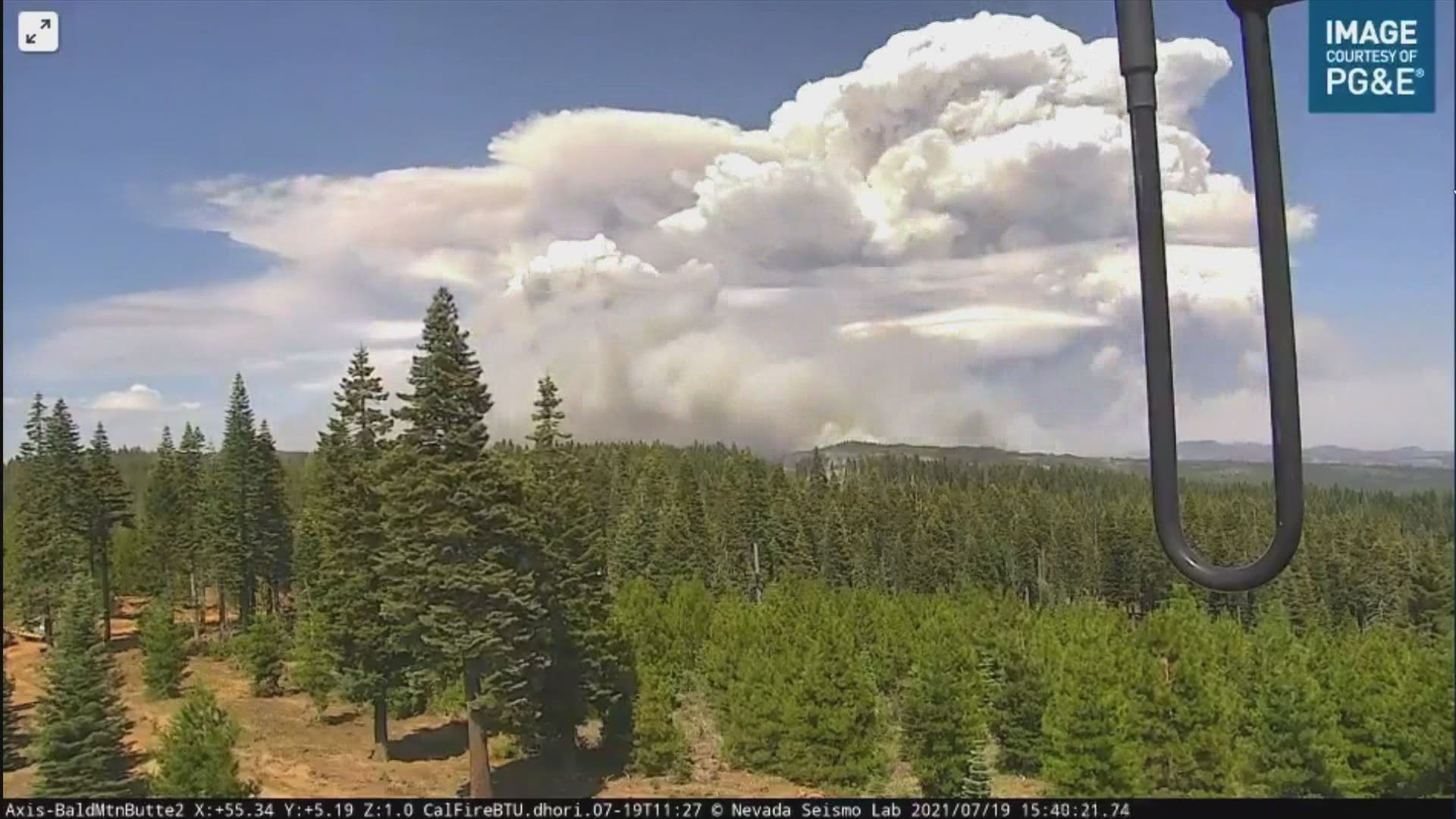When thinking about wildfires, we often think about its impact on our land, community and neighbors. But there is something else to consider: the atmosphere.
PyroCbs, short for pyrocumulonimbus clouds, are often referred to as thunderclouds, a type of plume that mixes smoke particles in the upper atmosphere linking to storm elements like lightning or hail. It’s a phenomenon that you might see in a volcanic eruption – and now wildfires.
The U.S. Naval Research Laboratory (NRL) described that through wildfire research, they have noticed a relationship between fires and elements in our weather.
And as wildfires increase across the Pacific Northwest and Canada this summer, the composition of aerosol being released in the atmosphere is increasing with them.
In fact, according to the NRL, two of the largest accounts of smoke plumes have been powered by wildfires and pushed up by storms within the past four years.
The main difference between these plumes in a volcano versus a wildfire is that wildfires can create “clusters” or multiple events of PyroCbs.
Whenever there is a lot of fire on a landscape in the right conditions, multiple storms and “major blowups” in the stratosphere can be taking place. Essentially, if the landscape and the weather is in the right place together, a much more significant thundercloud event can take place.
In the case of the recent Bootleg Fire in Oregon, said the NRL, "there was a stretch of several days in which a PyroCbs was being created almost every evening."
This means when the two “forces” of weather and fire combine, it can cause a major wind-storm and release dangerous plumes into the air, creating an extra level of caution for impacted communities.
And the more lightning and other factors contribute to the “cloud,” explained Mike Fromm from the Remote Sensing Division at the NRL, it begins to build a foundation for an even stronger fire the next time.
Scientists and communities like the NRL are continuing to work hard to learn more about these thunderclouds and what triggers these responses, in order to find ways to warn communities and prepare for the possibility of PyroCbs in the atmosphere.

